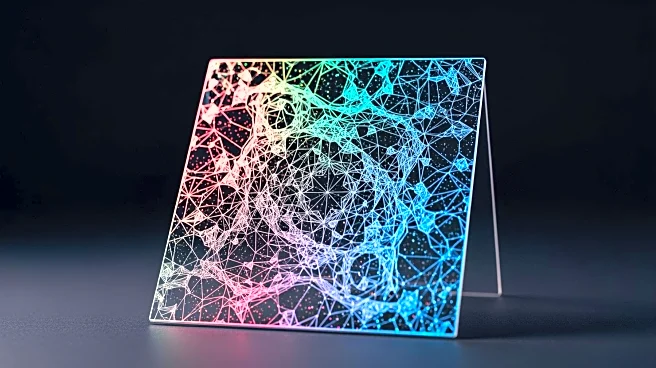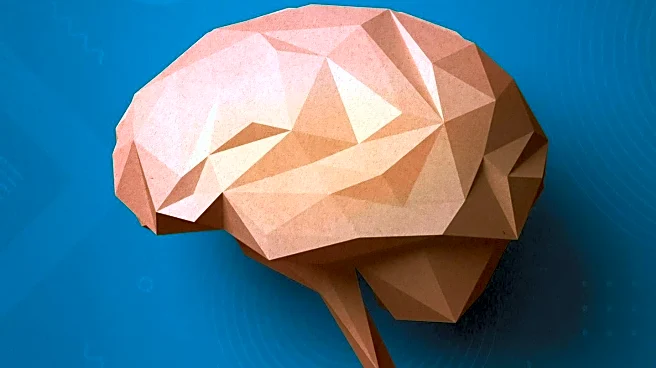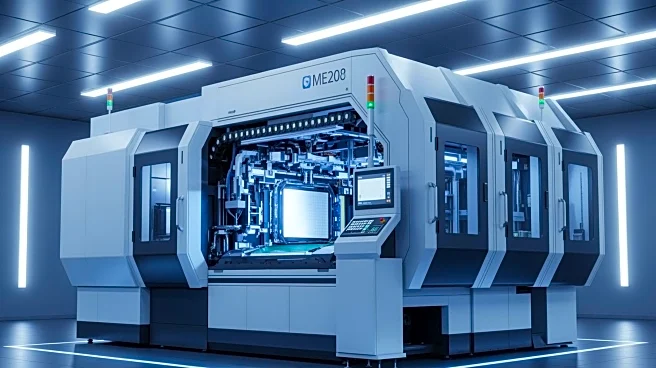What's Happening?
Researchers have developed a new method for speckle-free holographic lithography using phase-probability shaping. This technique involves shaping the probability density of the encoded random phase to suppress speckle contrast in holographic images. The
method utilizes an Adam-gradient-descent algorithm to design holograms, resulting in highly uniform images with sharp edges. This advancement allows for the fabrication of high-resolution structures, such as integrated circuits, with a feature size approaching the diffraction limit of light. The research demonstrates the potential of computer-generated holography (CGH) lithography as a lensless alternative for creating large-area nanophotonic devices.
Why It's Important?
The development of speckle-free holographic lithography represents a significant breakthrough in optical technology, with potential applications in various fields, including optical displays and lithography. By reducing speckle noise, this method enhances the quality and precision of holographic images, which is crucial for the fabrication of complex nanostructures. The ability to produce high-resolution patterns without the need for complex projection systems could lead to more efficient and cost-effective manufacturing processes in the semiconductor industry. This innovation may also pave the way for new advancements in virtual and augmented reality technologies.
Beyond the Headlines
The implications of this research extend beyond immediate technological applications. The reduction of speckle noise in holography could influence the development of new imaging techniques in fields such as medical diagnostics and scientific research. Additionally, the use of phase-probability shaping may inspire further exploration into the statistical properties of optical systems, potentially leading to novel approaches in other areas of photonics and optics.













